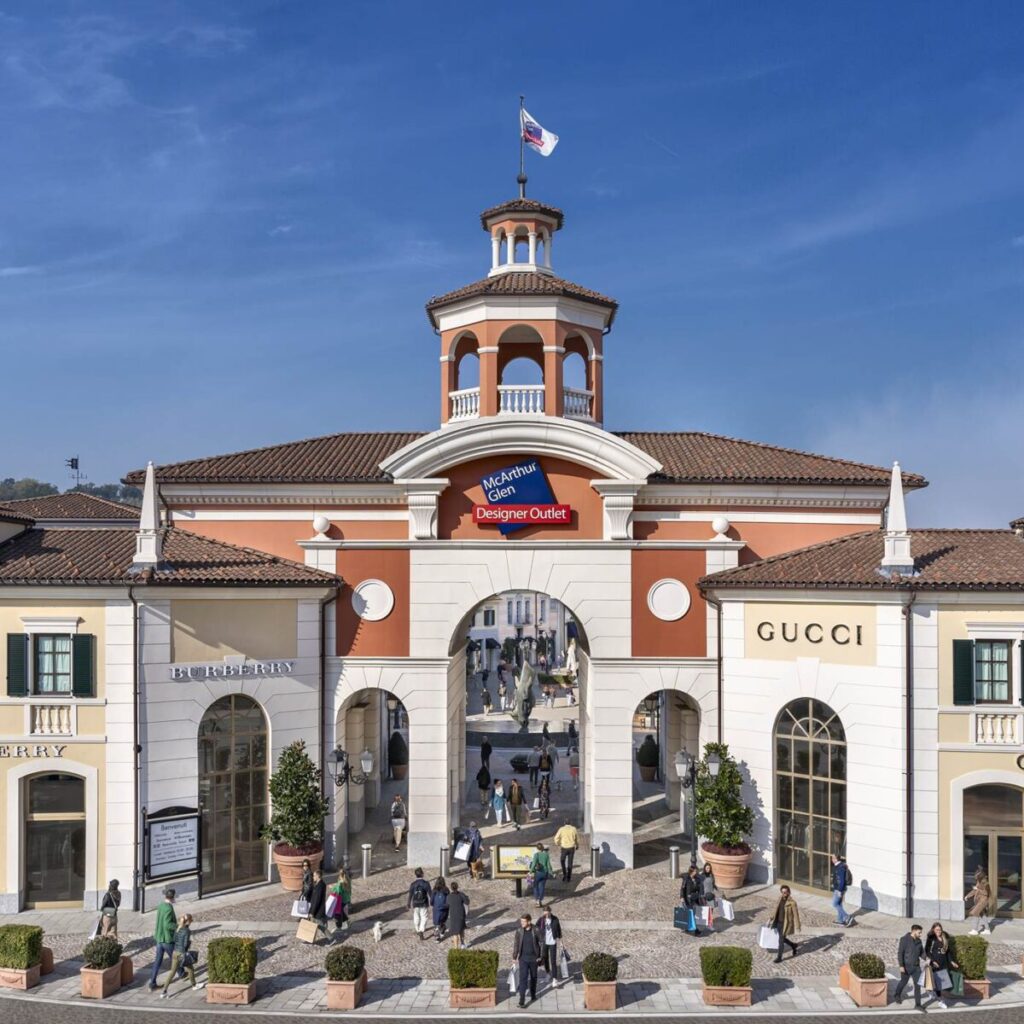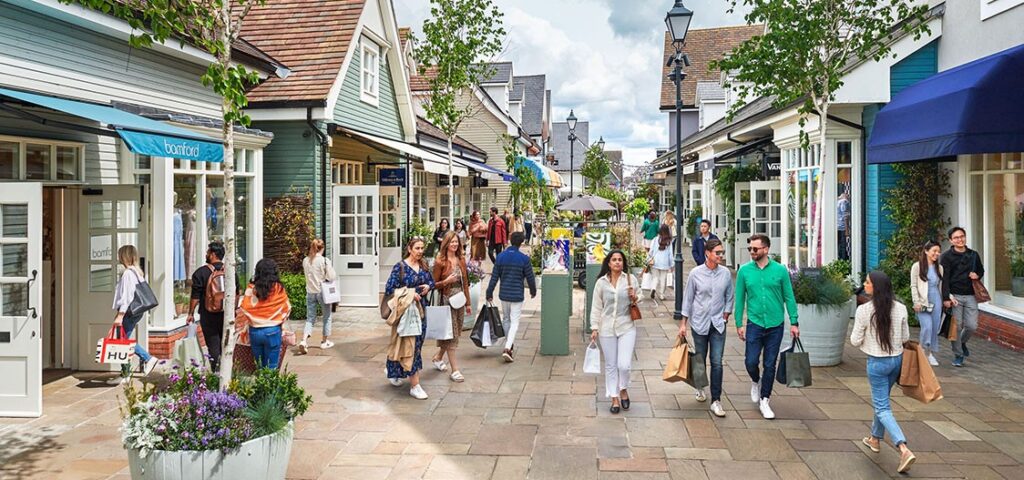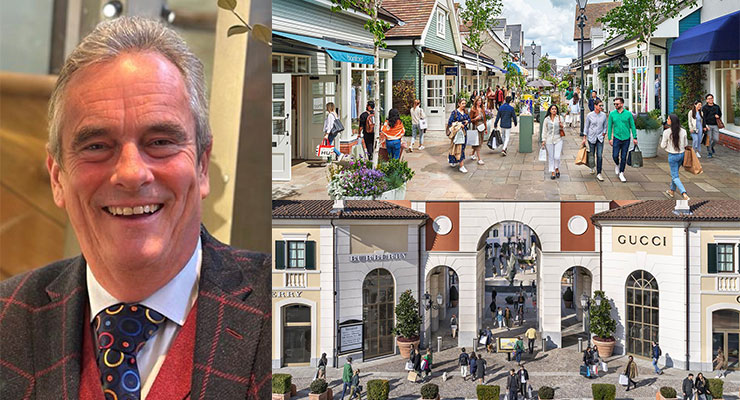Europe has long been a stronghold for designer outlets, with established destinations like Italy’s Serravalle Designer Outlet and Bicester Village in the UK setting benchmarks for the industry. These outlets not only attract local consumers but also draw international tourists seeking high-end fashion at lower prices. Yet, as the market matures, new developments face increasing competition and the challenge of distinguishing themselves in a crowded field.

credit: McArthurGlen
Looking beyond Europe, emerging markets present a compelling opportunity for outlet developers and brands alike. Regions like Asia-Pacific, the Middle East, and Latin America offer burgeoning middle-class populations with increasing disposable incomes and a growing appetite for luxury goods. For instance, China’s rapid urbanisation has fuelled demand for Western brands, while countries in the Middle East, such as the UAE and Saudi Arabia, boast affluent populations keen on luxury shopping experiences.
However, expanding into new territories requires careful consideration of local demographics, consumer behaviour, and regulatory environments. Understanding cultural preferences and shopping habits is crucial for tailoring the outlet experience to resonate with the target market. To this end, partnerships with local developers and brands can facilitate market entry and ensure relevance in a competitive market.
Countries like Austria, and parts of Italy have seen designer outlets proliferate for over two decades and as a result many major cities and tourist regions are already well-served by these outlets, meaning that prime locations have been occupied. Having said that, Germany is actually under provided when it comes to outlets.

Central European designer outlets often rely heavily on tourism, especially international visitors who are drawn to the prestige of European designer brands at discounted prices. However, external factors such as political instability, economic fluctuations, conflicts, and events like the COVID-19 pandemic, which reduced global tourism, have affected the flow of international shoppers.
With a growing number of outlets in close proximity, competition has intensified. As outlets saturate key regions, they are competing for the same pool of customers, both local and international. This has led to a diminishing return on investment for new developments, as brands already operate stores in several outlets, making it harder for new locations to differentiate themselves.
Prime locations for designer outlets are limited. Most outlets have historically benefited from being situated near major highways or close to urban centers and tourist hubs. However, as the number of outlets grows, suitable land for new developments becomes scarcer, and less optimal locations are often the only options left. This forces developers to make more challenging decisions about the feasibility of new projects.
Sustainability concerns and regulatory frameworks
Sustainability concerns and regulatory frameworks in Central Europe are increasingly impacting new developments, especially in more densely populated or protected areas. The emphasis on reducing carbon footprints and prioritising eco-friendly developments might limit opportunities for new large-scale outlet projects.
Beyond Central Europe, several regions present significant potential for designer outlet expansion, particularly in areas where outlet shopping is either underdeveloped or emerging as a consumer trend. The most promising markets can be identified based on factors such as rising disposable income, growing tourism, urbanisation, and a growing interest in luxury and aspirational brands.
The Middle East is one of the most promising regions for designer outlet expansion, driven by a combination of economic growth, luxury brand affinity, and the region’s appeal as a tourist destination. Cities like Dubai, Doha, and Riyadh have a strong culture of luxury shopping, but the outlet concept is relatively new to the region. There is a growing middle class alongside high net worth individuals who are increasingly looking for luxury bargains. Developing designer outlets in these regions could tap into both local and international demand, particularly as these countries continue to grow as global tourism hubs. Countries like the UAE have world-class retail infrastructure, which provides a strong foundation for outlet malls. Large-scale developments like Dubai Outlet Mall are already present, but there is room for more players to enter the market, especially in neighbouring countries like Saudi Arabia and Oman.
Despite already having some established outlet malls, China’s market remains underdeveloped relative to its population and demand for luxury goods. The country’s massive consumer base, coupled with the strong aspirational desire for Western designer brands, offers significant room for growth. The rise of “shopping tourism” among the Chinese middle class also points to opportunities for designer outlets aimed at this demographic.
Countries like Thailand, Malaysia and Indonesia have rapidly growing middle classes and are seeing increased tourism, both domestic and international. Outlet shopping is relatively new in these regions, but the demand for designer brands is rising, driven by increased disposable income and a youthful population that values global fashion trends.
Japan and South Korea already have a few successful outlet malls, but there is room for further expansion. The Japanese market, in particular, has a strong affinity for luxury goods, and outlets there have been hugely successful in capturing both domestic and international tourists.
Latin America is an emerging market with untapped potential for designer outlets, though it comes with challenges such as economic volatility, political instability, currency fluctuations and regulatory challenges. Mexico and Brazil stand out as the two largest economies in the region with growing middle-class populations. While luxury shopping is not as established as in Europe, the desire for designer brands is growing, particularly among the affluent urban populations in cities like São Paulo, Rio de Janeiro, and Mexico City.
When it comes to Africa then South Africa is perhaps the most developed retail market on the continent, and designer outlet malls could flourish in cities like Johannesburg and Cape Town, which already have well-established shopping cultures. The country’s infrastructure and tourism sector make it an attractive destination for international outlet brands as well. In North Africa, in countries such as Egypt and Morocco, tourism plays a significant role in these economies, and the rising middle class, coupled with a growing interest in Western brands, could make it a fertile ground for designer outlets in key urban and tourist destinations.
India, with its massive population and rapidly growing economy, is an intriguing market for designer outlets, though it comes with challenges such as regulatory complexity and infrastructure gaps. India’s middle class is expanding, and so is its taste for luxury goods, especially in urban centers like Mumbai and Delhi. Outlets that offer luxury at discounted prices could appeal to price-conscious yet aspirational Indian consumers. India is also a burgeoning tourist destination and designer outlets in key areas could tap into both local consumers and international tourists seeking luxury shopping experiences.
Closer to home, whilst Central Europe may be saturated, Eastern Europe remains relatively underdeveloped when it comes to designer outlets, making it an attractive opportunity. Countries like Poland, Hungary, Romania, and Bulgaria are seeing steady economic growth and increasing consumer interest in luxury brands. The proximity of these markets to wealthier Western European countries also means they could attract cross-border shoppers, especially with competitive pricing.
When looking at new and emerging areas it is also necessary to consider the attitude of the brands to these locations. In regions like the Middle East or Asia, where there is strong demand for luxury goods, they may see designer outlets as an opportunity to capture new audiences. In the Middle East, for example, the wealth and appetite for luxury brands make it a potentially attractive market for discounted luxury, allowing brands to reach price-sensitive consumers without compromising their presence in full-price stores. However, whilst some brands may see outlets in these regions as an opportunity for expansion, others may hesitate due to concerns about brand dilution. High-end designers often prioritise maintaining exclusivity and may worry that outlet stores in emerging markets could harm their luxury positioning.
The role of brands
Brands may also assess the maturity of a particular market. In regions such as China or the UAE, where luxury retail is well-established, brands might be more willing to participate in outlet centers. In contrast, in less mature markets, they may hesitate due to concerns about consumer education and purchasing behaviours.
Cultural factors can also influence a brand’s decision. For instance, in markets where status and prestige are heavily associated with luxury purchases, brands may be cautious about opening outlets that offer discounted items, fearing it could erode their premium appeal.
Finally, designer brands may weigh the potential for long-term growth. In regions with a growing middle class or rising disposable incomes, such as parts of Asia, outlets can serve as a strategic entry point to introduce the brand to a wider audience, with the hope that these customers will eventually transition to full-price retail.

Giles Membrey
Giles Membrey is Managing Director at Rioja Estates.






